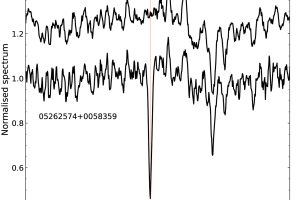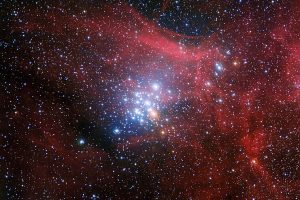A catalog of Lithium abundances from the Gaia-ESO Survey. The study: “The Gaia-ESO Survey: Lithium measurements and new curves of growth” of E.Franciosini (INAF-OA Arcetri) recently appeared on A&A

In astrophysics, there are elements that provide important diagnostics used in various fields, such as Lithium. For instance, measurements of Lithium abundances are important in cosmology where there is a well-known problem of matching the measured abundances in population II stars with those predicted by cosmological models of Big Bang synthesis. Measurements of Lithium abundances are also essential for understanding
» Read more

